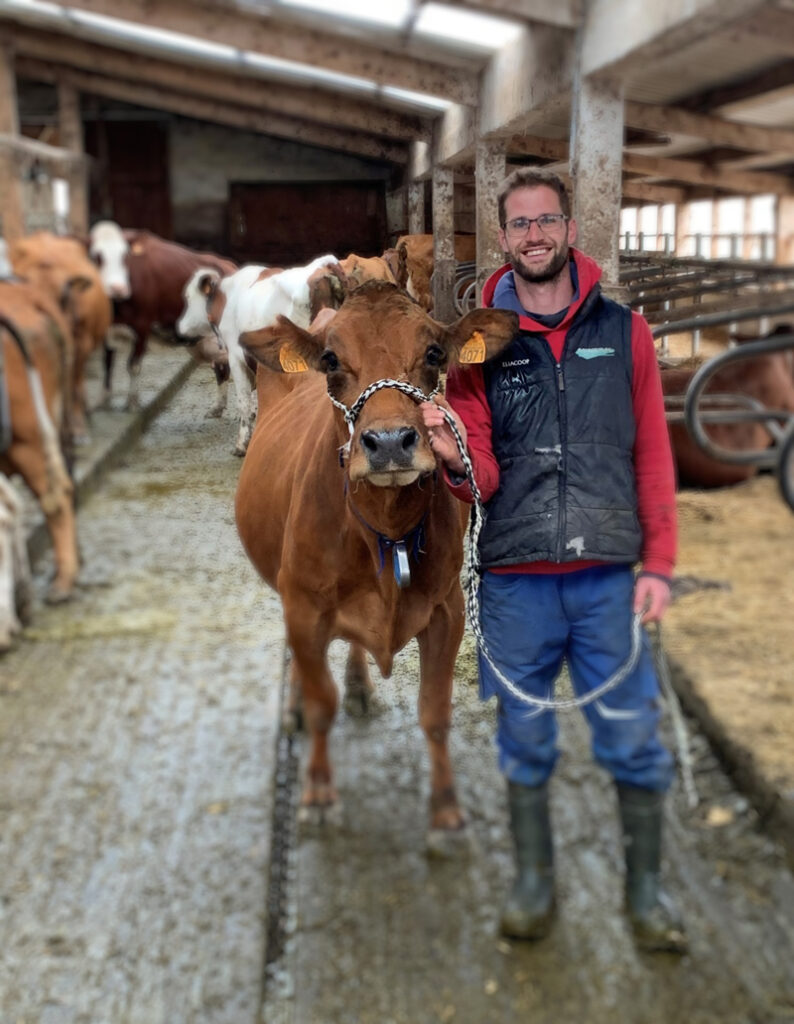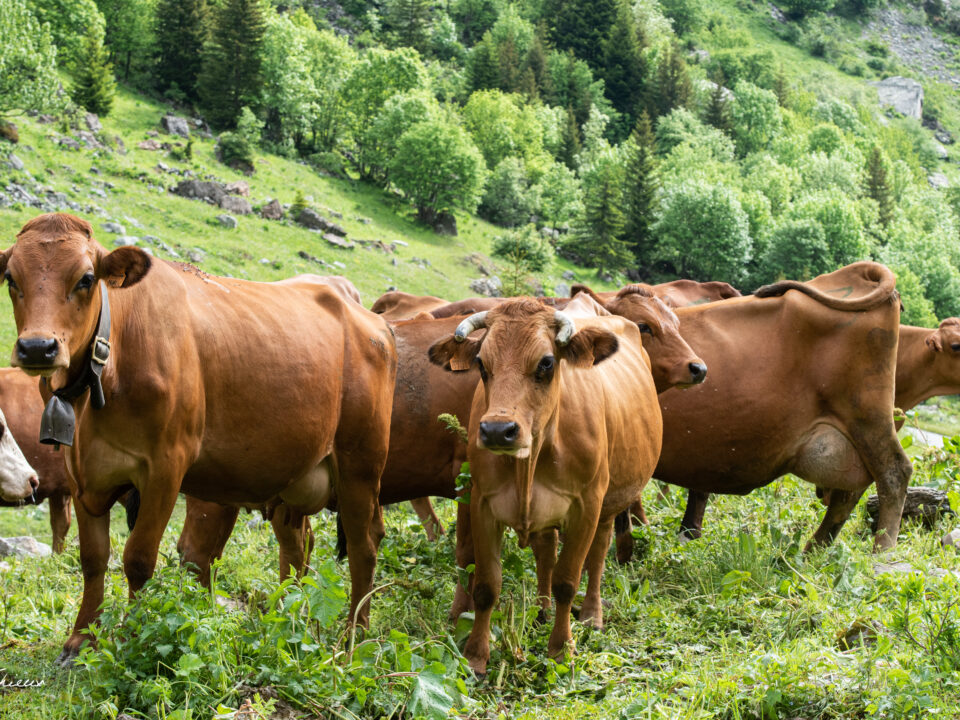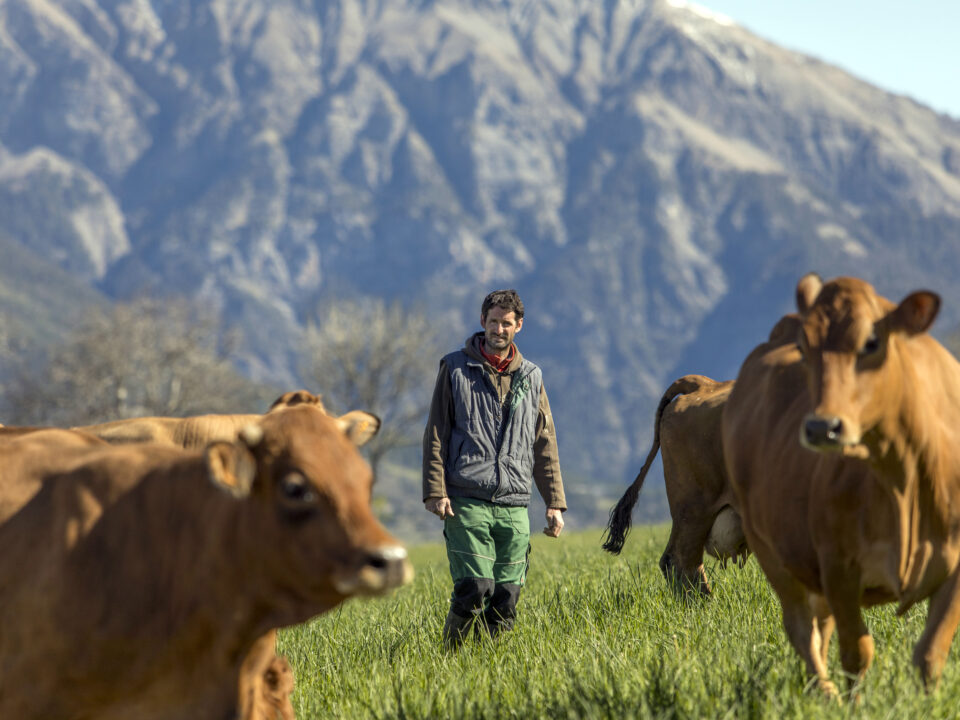
Single Step: towards a better representation of genetic progress
20 April 2022Breeder profile Mathieu ROUX (73)
Change course in less than 2 years by introducing and developing the Tarine breed within a herd of Abundance and Montbéliardes?
Mathieu’s gamble paid off thanks to genomics and biotechnologies: purchase of evaluated females, genomic evaluations of the herd’s females, use of sexed semen and Embryonic Transplantation!
What was Mathieu’s reaction to the announcement of the arrival of genomics in the Tarentaise breed? How does he manage this new tool today? Interview with a young breeder with a passion for Tarin.
This former cowherd at the Lycée Agricole de la Savoie farm in La Motte Servolex has been using genotyping since his arrival in the Tarentaise breed. Last year, Mathieu genotyped 4 heifers, this year: all his calves!
Genomics enables me to deploy a real technical and economic selection strategy, combining female genotyping, sexing, crossbreeding and embryo transfer.
Mathieu ROUX
When you were told about the arrival of genomics in the Tarentaise breed, what was your reaction?
I was a salaried employee on the Lycée farm and already a member of the Genetics Committee which approved this arrival. My colleague Thierry and I discussed this subject at length, and our reaction was mixed.
On the male flap, we were looking forward to it as it allowed for an increase in the Coefficients de Détermination des indexes. This allowed us to work more serenely on the selection and use of new bulls. Thanks to this CD gain, genomics also unlocked access to sexed semen.
On the female side, we were much more wary. To dispel our doubts, we tested the first genotypes at the Lycée on confirmed and known strains. The conclusive results of the genotyping quickly dispelled our suspicions. When I left the Lycée, almost all the heifers were genotyped.
What do you think of genomics today? How do you work once you know the indexes of your females?
Genomics is a major step forward, particularly for functional indexes such as Reproduction and Udder Health.
Genomics enables me to deploy a genuine technical and economic selection strategy, combining female genotyping, sexing, crossbreeding and embryo transfer. Female genotyping allows me to know more precisely the genetic value of my purchases, to sort out embryo donors, recipients and animals on which to use sexed semen or crossbreeding genetics.
What do you think of the first daughters of young bulls to calve?
Overall, I can see that the primiparous lots from young sires are more homogeneous than those obtained with the test system. The values announced for the young bulls are well confirmed for their daughters.
What percentage of your breeding operation uses young bulls?
When I launched the range, I used 30% young bulls. The results have been impressive, and today I’m at 95% usage!
BREEDING
For Mathieu ROUX, the adventure begins in 2018!
He took over a farm and the management of a herd of Abondance and Montbéliardes females at Bellecombe-en-Bauges (73). Fascinated by the Tarentaise breed, whose rusticity he particularly appreciates, Mathieu wanted to raise a herd mainly made up of Tarentaises.
To introduce the Tarentaise breed to his herd, Mathieu bought females and used genotyping, sexed semen and embryo transfer. A successful bet! Today, his farm has 50 dairy cows: 50% Tarentaise, 25% Abondance and 25% Montbéliardes.
Mathieu supplies 250,000 liters of milk a year to the Lescheraines dairy cooperative. This directly-managed dairy mainly produces Tome des Bauges PDO and Margériaz (pressed cooked cheese). In accordance with PDO specifications, his animals graze from April to November. In winter, the basic ration distributed to his animals is made up entirely of forage, produced mainly in the Bauges mountain range.
This genetics enthusiast is heavily involved in the CAP Tarentaise breeding organization. Mathieu has been a member of the Genetics Commission for several years.

His selection objectives are clear for his herd, which is still under construction. Its priorities are :
Protein: in his opinion, it is important to combine milk quantity and quality to preserve the Tarine breed’s ability to make cheese;
Reproduction: to increase his selection pressure, Mathieu wishes to choose his reforms on selection criteria and not “by obligation” because they are not pregnant;
Udder: a well-structured udder also ensures good milk quality and “pleasure”.




